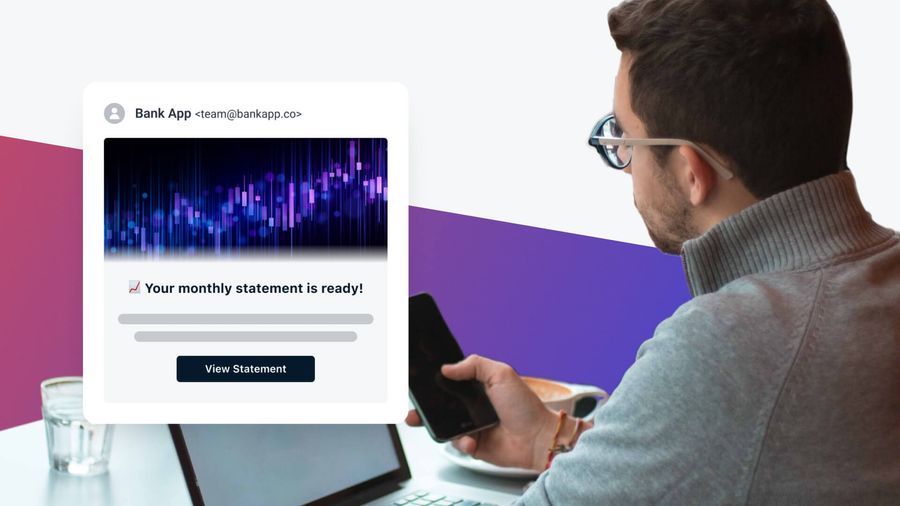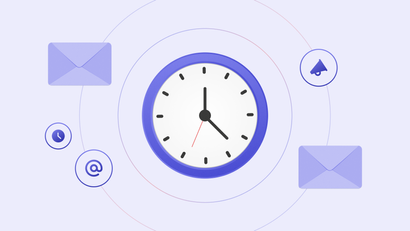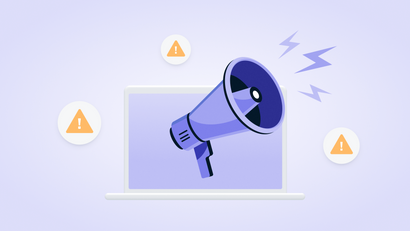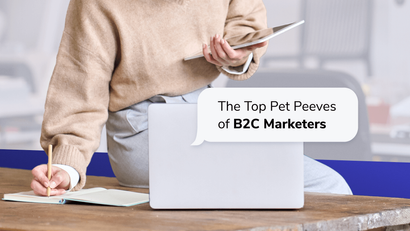Have you ever heard the rumor that email is dead?
To some mobile app marketers, email might seem like old news compared to the other flashy new channels gleaming in their field of vision.
Some might say that a legacy channel like email is irrelevant for your mobile app in an increasingly fast, connected digital marketing ecosystem. Some might say it’s too removed from the app experience. However, we beg to differ. Email is irreplaceable for certain message types, key for a variety of industries, and critical along the customer journey. Here we’ll address some common misconceptions you may have about email, and discuss why it’s very much alive and kicking!
Addressing Your Email Fears
We understand there are a variety of reasons why email may not be your top priority among your channels. Let’s talk through some of these common objections.
4 Email Misconceptions
Misconception #1: Email is irrelevant for your mobile app
Many apps assume that because they’re mobile-first and already have a web presence, they don’t need email. However, this is simply untrue. Here are some reasons email is not only relevant but indispensable for your mobile app company. Email empowers you to do the following.
Engage New Audiences
Email gives you another way to connect with your user base. Adding this channel to your strategy lets you cater to audience segments who may prefer email over other forms of communication. Some users may be less responsive to channels like push and SMS and more interested in growing a relationship through their inboxes.
For example, consumers in specific geographies or within certain age groups may express a stronger affinity for email than others. Behavioral data collected by the Digital Marketing Association (DMA) shows that mature audiences (ages 45 to 65+) are typically more active in their inboxes than younger audiences.
Gather Valuable Data
Launching email is also an opportunity to learn more about your different app audiences and their distinct preferences. Your email campaigns offer an additional data source to test and iterate from. An email marketing solution that integrates with other customer data systems and centralizes the management of multiple marketing channels can be useful in helping you build on these data-driven insights.
Leverage Space
With email, you have more freedom around the length and design of your message than you do with other channels. When you have a lot to say, the character restrictions you face with channels like push and SMS can get in the way of communicating the full scope of your message. In contrast, email gives you the space to fully articulate your message and enhance your content with visual elements. This channel is a medium for telling your story in full detail, complete with the words and images that bring it to life.
For example, your company may want to send content newsletters, product roundups, and/or detailed onboarding flows to keep your users engaged and informed. Email is ideal for conveying long-form content.
Send More Permanent Messages
Many app businesses need to send their users formal or official communications. Unlike push notifications, which can appear at any time and be quickly dismissed, emails serve as more private and protected records users can revisit as needed. Use cases in this category can include transactional messages such as verification codes, password resets, 2FA, reminders, and more.
Some companies may use email as a record for compiling reports or to resolve misunderstandings with customers. For example, an eCommerce app might use this channel to provide order receipts and shipment updates to stay in line with industry regulations.
For banking apps, email can serve to communicate that a user’s monthly statement is ready for review, that their crypto purchase has been made, or that a transaction has been completed.
Provided that emails are HIPPA-Compliant, telehealth apps can send their users appointment reminders or communicate with patients around insurance or billing issues.
In this way, an email inbox is an effective digital record that can be referenced by subscribers and business alike.
Misconception #2: Email is an Extra Expense
At first glance, you may notice that email sending is more expensive than push sending by volume. Although this may be true, email actually provides the highest average ROI of all marketing channels. For every dollar spent on email, businesses see an average ROI of an impressive $36, which represents a return of almost 400 percent.
Beyond this, the value that email can drive for app-based businesses is also significant.
One study shows that 81 percent of small and medium-sized businesses rely on email for customer acquisition and 80 percent use email marketing to retain customers. It’s well worth investing in this channel to reap the benefits it can provide.
Misconception #3: Email Maintenance is Too Complicated
If you’re just getting started with email, you might feel overwhelmed by the challenge of maintaining consistent delivery rates.
Deliverability can seem confusing, given the many factors that determine whether or not your emails arrive in a recipient’s inbox.
Maybe you’re concerned about compliance laws, the effort it takes to build an email list, or the possibility of subscribers remaining inactive or even reacting poorly to your content (i.e. banishing you to the dreaded spam folder!)
Your sender reputation can be affected by recipient engagement, email content, spam complaints, spam traps, invalid email addresses, blacklists, and domain reputation.
Easy ways you can improve your deliverability include managing send volume and earning higher clicks and open rates with compelling, well-timed content (which is easier with templates, automations, and no-code composers.)
In order to send better content, which should, in turn, increase your subscribers’ engagement with your emails, you can pick a provider with powerful integrations, accessible customer support, and features that allow you easily compose, customize, and automate messages for your recipients.
Once you get the hang of the deliverability basics, you’ll start gaining momentum in no time.
Misconception #4: Email Implementation Takes Too Much Effort
You might be worried about the time and effort it’ll take to get started with email.
However, the process of setting up and launching a baseline email program can be simple and seamless if you choose a solution that fits these needs. Although it’s true it takes time and effort to build out a robust email program, you can nonetheless start seeing value with a simple strategy and build out sophistication as you go.
With the right provider, you should be able to easily and quickly import emails, track key data, and get meaningful analytics on your campaigns in no time.
An effective multichannel solution will enable you to sync emails from your site or app and start delivering messages with the same dashboard, API, and SDK that you use for notifications.
As you get up and running, it can be a good idea to slowly ramp up by starting with simple automations like a welcome or onboarding email, and building out more complexity as you go.
Get Started with OneSignal
OneSignal is designed to help you send messages and seamlessly manage your user communication across a variety of channels, including email, mobile push notifications, web push notifications, bulk SMS, and in-app messaging. Our platform is quick to set up and makes it easy to automate and optimize your email campaigns without doing any development work. If you don't have a OneSignal account, you can create one for free — simply sign up and see for yourself!
Create a Free Account



